The EdChoice blog recently delivered some good news, specifically that the number of students using private choice programs increased by 25% last year. In fact, if you cobble together some previous years' data from the EdChoice ABCs of School Choice reports, the trend looks like:
Overall, a doubling of private choice participation since Arizona and West Virginia adopted universal policies in 2022 is looking like a good start. It is worth keeping in mind that surveys show that parents prefer private schools at approximately four times the rate that they enroll in them, and there are many miles to go on that front. The new program in Texas and the federal tax credit will provide additional sources of growth in the years ahead.
Meanwhile, over at Charter Folk, the not-so-good news. Jed Wallace has a striking post on the bifurcation of American education. Disadvantaged students have suffered the lion’s share of the decline in achievement since the pandemic struck.
This is your author’s observation rather than Wallace’s, but authorities adopting policies that teens can readily interpret as “attending school is not terribly important” have extremely negative consequences on absenteeism. Moreover, as best your humble author can tell, the “plan” for the public schools to do anything about it involves aging/dropping the academically damaged students out of the system.
In any case, Wallace puts his hammer on the head of an important nail regarding different reactions across red and blue states:
“It comes down to a topic I have written about several times here, which is whether teacher unions think they have overplayed their hands since the pandemic.
“My answer has been that in red states the answer is undoubtedly yes. Teacher union recalcitrance since the pandemic has sparked the Republican party to embrace private school choice, and that is resulting in seismic change happening in those states.
“In blue contexts, though, I have said that it’s a very different story. Thus far, Dems’ calculation has been that their hold on power is so unquestioned in blue states that they don’t really need to pivot on issues. They’ll be able to keep winning without making any adjustment at all.”
Ohio State University political scientist Vladimir Kogan, in his book “No Adult Left Behind,” argues: “We need a public school system that serves students, but we have created one that is governed at the behest of adults. We should not be surprised when it puts the interests of those adults first.”
Wallace is, correctly, I fear, noting that the politics of blue states lend themselves to more of the same on K-12. Wallace notes that this means more of this in Illinois:
If spending $93,787 per student at a high school with 0% proficiency in reading to go along with 0% proficiency in math is not your personal cup of tea, you might want to consider moving out of Illinois. It does not seem likely that you could find such a thing in any of the nearby states, two of which offer their citizens universal access to private choice programs:
Federalism allows people of divergent views to effectuate different policy goals, a healthy design feature of the American Constitution. If your state uses their monopoly on force to require you to pay for the schools like those listed above, opting out sounds like a splendid idea. Finding yourself forced to pay for those schools is far more than anyone should tolerate. Finding oneself forced to pay for them and being required to send your children to them is far, far worse. Illinois policymakers would never inflict this on their own children but seem entirely content to do so on thousands of their fellow citizens.
Depeche Mode once sang about “the grabbing hands grab all they can” but the same song noted “everything counts in large amounts.” For example, within the lifetimes of many reading this post, Illinois will have gone from having twice as many seats in Congress as Florida, to half as many (see below).
 Everything counts in large amounts, indeed. The grabbing hands will be grabbing all they can, but your interests, dear reader, lie in putting yourself beyond their reach.
Everything counts in large amounts, indeed. The grabbing hands will be grabbing all they can, but your interests, dear reader, lie in putting yourself beyond their reach.

The Rev. H.K. Matthews, front row, second from left, and John Kirtley, front row, far left, joined more than 6,000 marchers at a 2010 Tallahassee rally to support expanding the income-based Florida Tax Credit Scholarship Program.
By John Kirtley
The Rev. H.K. Matthews passed away Monday at the age of 97. As I urge you to read in this obituary, he was one of the towering figures in the Florida civil rights movement.
He was arrested over 30 times fighting for equal rights in Northwest Florida. He was beaten, along with John Lewis and other brave activists, on the Edmund Pettus Bridge in their first attempt to march from Selma to Montgomery. There is now a park named in his honor in Pensacola. You can also read his autobiography, “Victory After The Fall.”.
On a 2010 visit to Pensacola to recruit schools for the Florida Tax Credit Scholarship program, former Step Up For Students grassroots organizer Michael Benjamin and I met the operator of a faith-based school in town. He urged us to meet with Rev. Matthews, who he thought might respond well to the social justice message of the scholarship program. At the time, the average household income of our students was less than $30,000, and 75% were minorities. Michael and I said we would love to meet him.
Rev. Matthews didn’t say much during our initial visit; Michael and I explained how the scholarship program empowered low-income families to choose a different school if the one they were assigned to wasn’t working for them. He seemed to just take it all in but offered neither affirmation nor disagreement.
Almost as an afterthought, I invited him to a march and rally we were having the next month in Tallahassee. We needed the legislature to pass a bill to expand the scholarship program to relieve our waitlist, and we asked scholarship families to come to the Capitol to show their support. To my surprise, he agreed to attend.
On that day, over 6,000 people marched from the convention center to the Capitol. I invited Rev. Matthews to walk in front of the crowd with other faith leaders. Normally I would never walk in the front row, but I wanted to make sure everything went smoothly for him. He was very quiet as the huge crowd marched.
When we had gathered for the rally in the Capitol, I placed him in a prominent seat on the stage. A few minutes into the event, he motioned me over and asked if he could speak to the crowd. I had no idea what he was going to say, but I wasn’t going to say no. I went to the minister running our show and asked him to introduce Rev. Matthews.
What would he say? Was he with us?
I soon had my answer.
“This reminds me of the old movement,” he said. “Seeing thousands walking in the streets, fighting for the right to determine their own future, to fight for what is best for their children. When I worked with Dr. King back in the day …”
When he said those words, there was a murmur in the crowd, both students and adults. These kids had read about Dr. King in their history books. Some of them knew that there were not one but two marches across the Pettus Bridge, and here was someone who was there at the first attempt, someone who took the blows.
He was indeed with us.
Immediately after the rally, Rev. Matthews was swarmed by students young and old, some asking questions about his time with Dr. King, some young ones who just wanted to touch him — I suppose just to make sure this hero was real. They did not let him go for at least 20 minutes.
I could tell at the time this moved him. He told me so later. After that day he would call me to ask if there was anything he could do to help the movement. We had him appear at events with donors, governors, and legislators.
He would lead another march for us in 2016, when over 10,000 people came to protest the lawsuit filed by the Florida teachers union demanding that the courts shut down the Tax Credit Scholarship, which would evict 80,000 poor kids from their schools. That day Rev. Matthews was joined at the front of the procession by Martin Luther King III, the son of the man Matthews marched with 50 years prior. You can watch a 60-second video of that march here.
I had the pleasure of joining him at his church in Brewton, Alabama, where he moved in later years. He was being honored for his years of service to that church. I was honored, though very surprised, when he called me up to speak that day. Luckily, the words to praise him came easily.
They come again easily today, but not without a few tears.
How fortunate I was to have my life intersect with his, however unlikely that would have been to me before this movement changed the course of my life.
How fortunate the education freedom movement was to have his blessing and his involvement.
How fortunate the state of Florida was to have his tireless efforts fighting for civil rights.
How fortunate, all.
Rest in peace, Rev. Matthews.
John Kirtley is founder and chairman of Step Up For Students.
A generation ago, Florida’s school districts could safely assume that most students would board a yellow bus (or perhaps walk less than two miles) to a public school they operated.
 A few wealthy students might head to a private school. A handful of students from each neighborhood might board a different yellow bus to a local magnet or charter school. But these were marginal deviations from the norm.
A few wealthy students might head to a private school. A handful of students from each neighborhood might board a different yellow bus to a local magnet or charter school. But these were marginal deviations from the norm.
Now, those deviations are the norm.
Close to half a million Sunshine State students use a scholarship program to access a learning option of their choice. More than 400,000 students attend charter schools that aren’t operated by districts. All told, roughly half the state’s 3.4 million K-12 students attend a learning option other than their zoned public school.
There are unsung heroes in this story of expanding options: Florida’s 67 school districts.
With all the growth of charters and scholarship programs, district-operated options, — including open enrollment, magnet schools, career academies, and more — still account for the single-largest swath of school choice in the state.
Thanks to all these options growing at the same time, no school can take a student’s enrollment for granted. Every school has to earn the trust of every student or family who walks through their doors.
A survey by the national advocacy group 50CAN found 76% of Florida parents feel they have a choice in where they’re child goes to school.
That means that while half of Florida’s students attend a “school of choice,” half the remainder attend a local public school by choice, having considered other available options.
I’ve now experienced this change firsthand. I’m in the process of finding the right Pre-K for my daughter. After searching for miles and visiting private, charter, and district public schools, my wife and I landed on a clear favorite: Goldsboro Elementary, a magnet school operated by Seminole County Public Schools.
My daughter was enchanted by the astronomy lab. And of all the schools we spoke to, Goldsboro’s teachers had the clearest plan for ensuring our daughter, who currently reads on a first-grade level, will continue to be challenged academically.
Districts are stepping up their game. Competition from other options is certainly a factor.
But in recent months, I’ve had the chance to talk to district leaders across the state who are exploring a new frontier of educational options: They are looking for ways to offer individual courses and services to students using K-12 education choice scholarships.
These aren’t the stodgy bureaucrats that advocates and reformers sometimes cast as their foils in battles over the future of education. These are problem-solvers who hear the demand for new and different learning opportunities from their communities. They are working to respond.
In a future where every Florida student has access to abundant education opportunities, districts will play an essential role.
For the past 175 years, U.S. public education has been a government monopoly utilizing a one-size-fits-all approach to educating students. Educators know each student is unique, and many are poorly served by this market structure and pedagogy. But social engineering and the massive numbers of students public education serves have led government to implement centrally controlled standardized methodologies.
The modern education choice movement is trying to persuade government and the public to end the government’s monopoly and empower families to replace one-size-fits-all education with customized instruction capable of meeting the distinct needs of each student. While this is an audacious aspiration that faces numerous political and operational challenges, providing each child with an equal opportunity to succeed is possible only through empowering families to customize their child’s education.
How to best redistribute power and balance the control that families and government have over how each child is educated is challenging. Public education exists to serve the public good. Taxpayers are paying the bills, and elected representatives are responsible for ensuring taxpayers get a good return on their investment.
But as we have seen over the past two centuries, government’s educational monopoly is unable to provide each child with an appropriately customized education. Only each child’s family, who know their child best, can do this. Consequently, government should empower families and trust them to make good education decisions. For this needed trust to exist, it needs to be accompanied by verification. Trust but verify is key to family empowerment and to customized instruction succeeding in public education.
State governments use education savings accounts (ESAs) to empower families and enable this transition from one-size-fits-all education to customization. ESAs are flexible spending accounts that allow families to buy the educational products and services they need for their child.
Florida’s state government lets families use their ESAs to buy services from public schools, private schools, homeschool providers, tutors, teachers, and occupational and physical therapists, among others. Families may also purchase educational products such as curriculum, books, physical education equipment and instructional technology, and pay for educational experiences such as field trips to historic sites.
Thanks to the flexibility ESAs provide families and educators, public education is increasingly occurring outside school buildings at libraries, beaches, museums, parks, aquariums, homes, theme parks, art galleries, farms, community centers, forests, and historic sites.
Most families use their ESAs to pay for private school tuition and fees, but some also pay for zoology lessons in the Ocala National Forest, marine biology seminars at SeaWorld, hands-on horticultural experiences on farms, and meetings with scientists on beaches to better understand how climate change is affecting coastal erosion.
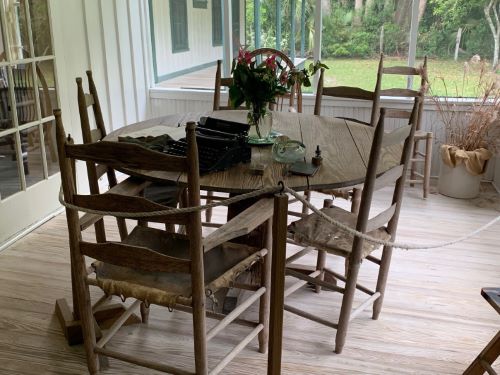
Also becoming more common are trips to historic sites such as Marjorie Kinnan Rawlings’ Cross Creek home to learn more about how life in rural Florida influenced her writing or St. Augustine, the nation’s oldest European-established city, to learn how the Spanish affected Florida’s history.
While students, families, and educators enthusiastically embrace these hands-on learning opportunities, some people do not trust that students are learning when they are at beaches, forests, theme parks, farms, or old Cracker houses in rural Florida. They think students today should be taught the way they were taught, sitting at desks in rows in school buildings and listening to the teacher at the front of the room.
To build trust in these instructional innovations, we need to verify students are learning even when they are not sitting in traditional classrooms.
So, how do we prove that taxpayers are getting a good return on their public education investment when a student uses ESA funds to visit SeaWorld or the Marjorie Kinnan Rawlings Historic State Park?
In public education, we primarily use standardized tests and classroom grades to measure student achievement. Unfortunately, these assessments are limited and do not measure many important aspects of child development, such as responsibility, honesty, resiliency, grit, self-management, critical thinking, empathy, problem-solving, and relationship management.
Over the past several decades, many educators and educational researchers have argued that portfolio assessments are better because they allow for a more comprehensive and accurate evaluation of a child’s development. Families, educators, and students put evidence of how well a student is progressing academically, socially, and personally into the portfolio, and these multiple data points from diverse perspectives tend to provide a better overview of a student’s development. Many portfolios also include traditional standardized test data.
Some ESA programs require families to submit annual learning plans that identify the learning priorities their students will focus on during the school year. Florida allows ESA funds to pay for approved choice navigators to help families with these plans, which are required for those who use Personalized Education Program scholarships.
Regardless of which accountability measures are used, how much educational decision-making authority government transfers to families and how government holds families accountable for their decisions will be state-by-state political decisions that unfold over the next several years.

The Wall Street Journal ran an article which had your humble author giggling for hours afterwards called Sorry Harvard Everyone Wants to Go to College in the South Now. Nothing against Harvard, mind you. Some love hanging around with silver spoon kids trying to work out their misplaced guilt over their parents’ success with protests over micro-aggressions. If that is your cup of tea, then sip away. As the Wall Street Journal noted however a growing number of northern students have decided to try a different flavor of tea (sweet) down south:
A growing number of high-school seniors in the North are making an unexpected choice for college: They are heading to Clemson, Georgia Tech, South Carolina, Alabama and other universities in the South.
Students say they are searching for the fun and school spirit emanating from the South on their social-media feeds. Their parents cite lower tuition and less debt, and warmer weather. College counselors also say many teens are eager to trade the political polarization ripping apart campuses in New England and New York for the sense of community epitomized by the South’s football Saturdays. Promising job prospects after graduation can sweeten the pot.
The number of Northerners going to Southern public schools went up 84% over the past two decades, and jumped 30% from 2018 to 2022, a Wall Street Journal analysis of the latest available Education Department data found.

What kind of fun? How about Vanderbilt students carrying a goal post down Nashville’s Honky Tonk Highway in triumph after defeating the top ranked Alabama Crimson Tide? Ever been to the Grove in Oxford on a game day? The Ole Miss folks claim while they may not win every game, they have never lost a party. Take my word for it, you won’t regret putting it on your bucket list:

College students are not the only ones heading south. The Census Bureau has a nifty tool to allow you to track where young adults are leaving and where they are going. As an earlier Wall Street Journal article detailed:
Daniel Brookings Institution demographer William Frey details this in a September report. Describing what he calls “a virtual evacuation from many northern areas,” Mr. Frey writes the “movement is largely driven by younger, college-educated Black Americans, from both northern and western places of origin…But an undeniable reality, emphasized by Gov. DeSantis, is that this movement is overwhelmingly driven by the prospect of greater economic opportunity.
It is not just economic opportunity that might attract young adults south-educational opportunity just might do so as well, and not just of the college sort. What would cause a “virtual evacuation” for northern areas? How about things like the entire Chicago school board resigning in protest as a teacher union affiliated mayor plunges the district into a debt spiral?

In times like these, Chicagoans should ask themselves WWEMD (What Would Eddie Murphy Do?) Here’s a hint: that disembodied demonic voice is not urging you to hang around in Chicago. Quite the opposite:
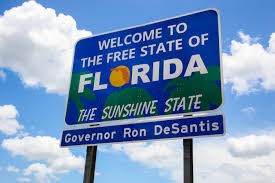
As our country was being formed, states such as Connecticut, Georgia, Maryland, Massachusetts, New Hampshire, South Carolina, and Virginia adopted state religions that citizens were taxed to fund and expected to follow. In response to this infringement on personal freedom, the U.S. Constitution was amended to include language, called the Establishment and Free Exercise Clauses, forbidding the establishment of a government religion and guaranteeing individuals the freedom to practice or not practice religion. These clauses read: "Congress shall make no law respecting an establishment of religion, or prohibiting the free exercise thereof.”
Opponents of education choice programs that allow students to voluntarily use publicly funded education choice scholarships to pay for tuition at religious schools assert that these choice programs are unconstitutional primarily because they violate the Establishment Clause. In essence, legally equating families who freely choose to send their child to a religious school using a publicly funded scholarship with a government coercing people to support a state religion. The courts have made clear this argument has no merit and is dead on arrival. But opponents keep trying.
Teachers unions are the most aggressive opponents of education choice programs. The National Education Association (NEA), the nation’s largest teachers union, says, “Voucher programs drain resources from public schools and funnel those resources to private and religious schools, violating the Establishment Clause.” The second largest union, the American Federation of Teachers (AFT), agrees.
Other prominent opponents concur with the teachers unions’ reasoning. People for the American Way believes that "By using taxpayer money to fund private religious education, voucher programs violate the Establishment Clause.” The Freedom From Religion Foundation (FRF) writes that, "School voucher schemes unconstitutionally entangle government with religion by directing public funds to parochial schools, thereby violating the Establishment Clause."
Americans United for the Separation of Church and State (Americans United) asserts that education choice programs violate both the Establishment and Free Exercise Clauses. "School vouchers funnel taxpayer money to private religious schools…This violates the Establishment Clause and the religious freedom of taxpayers."
The Southern Poverty Law Center (SPLC) makes a similar argument. "School voucher programs that funnel taxpayer dollars to private, religious schools violate the Establishment Clause of the First Amendment by compelling taxpayers to support religious instruction and activities. Such programs erode the separation of church and state, a foundational principle of our democracy."
Suggesting that the Establishment and Free Exercise Clauses give individual taxpayers the right to circumvent elected representatives and decide for themselves how government spends their taxes is a rejection of democratic governance. Expecting a fire department to check with its local taxpayers to determine whose taxes may be used to fund putting out fires at churches is impractical.
The American Civil Liberties Union (ACLU) invents a “constitutional principle” when it claims, "Voucher programs, which divert taxpayer dollars to private, often religious schools, undermine the fundamental constitutional principle of separation of church and state.”
The phrase “separation of church and state” is not a constitutional principle. It does not appear in the U.S. Constitution. Thomas Jefferson used this phrase in an 1802 letter to the Danbury Baptist Association in Connecticut to reinforce the intent of the Establishment and Free Exercise Clauses, which is that government should not interfere with citizens’ right to practice or not practice religion unless this practice violates public laws. The state will not allow a religion to construct a building without a government permit or abuse children. The U.S. Constitution requires the relationship between religion and government to be appropriate but not nonexistent.
Beginning with the Zelman v. Simmons-Harris ruling in 2002 and continuing with the 2020 Espinoza v. Montana Department Revenue case and the Carson v. Makin decision in 2022, the U.S. Supreme Court has consistently ruled over the past two and a half decades that programs providing public funds to help families pay for educational services offered by religious organizations are constitutional, provided families make these choices freely. These court rulings suggest an Establishment Clause violation occurs only when a family’s decision to use public funds to pay a religious organization for educational services is influenced by government coercion.
Despite the weakness of their legal arguments, the ACLU, AFT, Americans United, FRF, NEA, and SPLC have supported lawsuits in Arizona, Florida, Indiana, Maine, Montana, Nevada, New Hampshire, North Carolina, Ohio, West Virgina, and Wisconsin challenging the constitutionality of K-12 programs that allowed families to purchase education services from religious organizations using public funds. But these groups have never legally challenged the constitutionality of prekindergarten and higher education students using public funds to attend religious schools.
Why do they support legally forbidding a high school senior from using public funds to pay tuition at a Catholic high school but look the other way two months later when this same student uses public funds to pay for tuition at the University of Notre Dame? The answer is tribal politics.
Humans are tribal. We are all members of multiple tribes, including tribes organized around political beliefs. To remain a tribal member, we must conform to that tribe’s beliefs, no matter how irrational they may appear to those outside the tribe.
Most of the AFT’s and NEA’s dues-paying union members work in K-12 school districts. Consequently, the AFT and NEA are highly motivated to protect the jobs and compensation of these members by opposing students using public funds to attend private schools that employ non-union teachers. Since most private schools are faith-based, these unions use the Establishment Clause violation argument as a legal and political weapon despite its ineffectiveness.
The NEA and AFT have far fewer members working in prekindergarten and higher education institutions. Consequently, they are less willing to spend money and political capital opposing students using public funds to attend religious schools in these two sectors.
Education choice opponents such as the ACLU, Americans United, SPLC, and most Democratic Party elected officials, are in the same political tribe as the NEA and AFT, and these two unions provide much of the money and grassroots activists that give this political tribe its power and influence. Therefore, these groups conform with the AFT's and NEA’s legal reasoning for opposing publicly funded education choice programs and will continue to do so until the unions change their positions.
At a mid-1980s NEA convention, the delegates overwhelmingly rejected a resolution supporting magnet schools. As the floor manager for this resolution, I remember this defeat well. Opponents claimed magnet schools undermine neighborhood public schools and correctly argued that magnet schools are a manifestation of Milton Friedman’s initial school voucher proposal. A few years later, after thousands of NEA members began working in magnet schools, the union reversed its position and embraced magnet schools.
Today the NEA and AFT’s tribal partners all support magnet schools despite their school voucher lineage suggesting tribal loyalty is stronger than ideological consistency, and tribes will rationalize changing core positions to enhance their economic and political strength.
In Florida, teachers unions are slowly bleeding to death as thousands of unionized teachers leave to teach in a rapidly expanding array of new, non-unionized education settings such as homeschool co-ops, hybrid schools, and microschools. To survive, Florida teachers unions need to begin serving these teachers, including those working for religious organizations.
For more than 40 years, I have argued that teachers need to replace their old-school industrial unionism with a model that can serve teachers in diverse and decentralized settings. If they do not evolve, they will not survive. Nor will some of their tribal colleagues.

Organizations like Surf Skate Science pioneering new approaches to collaboration in public education. Photo credit: Chris Aluka Berry AlukaStorytellingPhotography.com
Despite calls for reform and waves of attempted transformation, key features of American schools have been remarkably stable for more than a century.
Students spend six or so hours a day, five days a week, sitting in rows of desks with other children about the same age, receiving instruction from their teachers in specific subjects: language arts, math, science and social studies. At the end of the year, they advance to the next grade. In high school, they socialize while standing next to banks of lockers, and the varsity football teams play on Friday nights.
These conventions persist despite their flaws. Students are frequently passed along to the next grade despite gaps in their academic foundations, leading them to graduate unprepared for life after school and few opportunities to close those gaps. If political leaders decide new knowledge or skills will be essential for students to thrive as adults — computer science, say, or financial literacy —cramming new subjects into the existing curriculum is a major headache.
The more time students spend in conventional schools, the more bored and disengaged they become. Some of the most engaging parts of schools have been relegated to the periphery—career academies, extracurriculars, sports, drama or music programs— where common schooling conventions hold the least sway. These are the places where students form deep relationships, develop lasting memories, and hone skills like creativity or teamwork.
So why do these conventions persist? Innovation researchers at the Clayton Christiansen Institute coined a term for one set of hidden forces that can keep an existing system in place despite pressure for change: A value network.
Textbook publishers and education technology companies design their products for conventional schools. Construction firms specialize in building them. Colleges train teachers to work in them. Complex webs of afterschool programs, summer camps, tutoring centers, and youth sports leagues all design their programs around conventional assumptions about when students will be in school. Parents and employers design the workweek around it.
These interdependent forces pose huge hurdles for any innovative educator who wants to break from convention. So, Christiansen's Thomas Arnett argues it’s best not to try within the confines of the existing system.
Instead, he advocates creating not just new learning experiences for children, but entirely new value networks that can allow new assumptions to take shape.
In Florida, and in in pockets all over the country, this is starting to happen. Here are two promising places to look for the value networks of the future.
Homeschool parents and community institutions
Some of the most valuable learning assets in most communities lie wholly or partially dormant during school hours. Museums. Parks. Zoos. Community centers. Science centers. Aquariums. Libraries. Performing arts theaters.
Their role in the value network of a conventional school system is relegated to the periphery: Hosting field trips, afterschool programs, or summer camps.
This is a huge missed opportunity. A single day a student spends at a place like this can often be the highlight of their school year. And while field trips are often rare and logistically complicated, there is evidence they not only help boost students’ academic learning, but help them develop character skills such as empathy and conscientiousness.
One group of students gets to experience these places more frequently, a way that is more central to their learning experience: Homeschoolers.
A growing number of community institutions, like libraries and science centers and museums, now offer dedicated programs for homeschool students.
If a trip to the aquarium could be the highlight of a student’s year, why not take them every month, or every week? Show them behind the scenes. Let them go deep learning about specific sea creatures or oceanic habitats and how they change over time. Offering learning opportunities of this sort would squarely align with an aquarium’s mission of increasing public understanding and appreciation of aquatic ecosystems.
Homeschool families are partnering with these community institutions (many of them public, by the way) to create new value networks that don’t relegate community assets to the periphery, and instead make them a central part of more children’s learning experiences. Over time, more children may benefit from these pioneering efforts.
Schools that partner by design
Right now, if an innovative educator creates a new way to teach chemistry through cooking, or math through music, or electrical engineering specifically for girls, they have three main options to find an audience for their idea: Start a whole new school, figure out how to sell their program to schools and districts, or create an option on the periphery—designing an afterschool program or summer camp and marketing it to families who pay out of pocket.
Each of these options is daunting. The existing education value network stifles the creativity of would-be entrepreneurs and keeps potential contributions of countless community members on the sidelines.
But here again, the efforts of a few pioneers have begun giving rise to new value networks, in this case by launching learning that are more inter-operable with other partners than conventional schools.
Like an old ship that creates a new home for coral, some of the earliest microschools and homeschool co-ops in South Florida have given rise to entire ecosystems of educators who create specific offerings and partner with smaller, more flexible learning environments to deliver them to students, as my colleague Ron Matus has documented.
The value network of the future
Other societal forces are creating pressure for new value networks in education. More parents than ever are working remote and flexible jobs. Scholarship programs allow more public education funding to follow students to whatever learning environment they choose. Information, which was scarce for most of human history, is now abundant.
If existing conventional schools find a way to adapt to these realities, it will likely be because they find ways to connect to entirely new value networks created by entrepreneurs working outside it.
An episode of Paul MM Cooper’s outstanding documentary podcast series "The Fall of Civilizations" recounts the history of Carthage, which includes details of wars fought between the Carthaginians and Syracuse during the 300s BC. Carthage, a highly successful sea-trading nation, fought a number of wars with Greek colonies in Sicily prior to later wars with Rome.
Cooper describes how the Carthaginians made extensive use of mercenary armies, to spare themselves from the dirty business of fighting wars. During a Carthaginian siege of Syracuse, the Syracusans turned the tables on their attackers and sailed to attack Carthage. The wealthy but martially inept Carthaginians made impromptu efforts at fielding an army. This didn’t go well. The Carthaginians brought shackles in hopes of enslaving the Greeks, but instead found themselves routed in the field. Having scrambled behind their walls, the Carthaginians attempted to generate divine favor by sacrificing children to their gods.
Contemporaneous Greek accounts, and later archeological evidence, indicate that the Carthaginians may have been the last Mediterranean civilization to practice human sacrifice. As if this were not odious enough, wealthy Carthaginians would purchase and sacrifice other people’s children.
At first these rituals seem to have been an authentic sacrifice, giving up the life of your own children in the hope of receiving favor from the gods, but before long, wealthy Carthaginians found a way around this. In fact, they seem to have developed a macabre industry, a trade in other people’s children for sacrifice.
Fortunately, sensibilities have evolved in intervening millennia, and we don’t go in for either human or for that matter, animal sacrifice, these days. Still this account struck me as unsettling. We manage to field our own military here in the United States. The decades of scandal related to politically connected Americans avoiding the draft has, however, more than a faint echo of the Carthaginian elite sending someone else to fight for them. Dodging military service inevitably entailed sending someone less connected, less fortunate than yourself to fight and sometimes to die in your place.
The phrase “a trade in other people’s children for sacrifice” is perhaps a bit strong to describe what happened to students during the COVID-19 debacle, but perhaps not, especially considering the minimal value derived from billions of federal education dollars. No small number of Americans benefited from choice schools as children, benefited from choice schools as parents, but oppose programs to provide K-12 choice to others. Like Carthaginians of old, these people are willing to sacrifice someone’s children for one reason or another, just not their own.
Between damaging their demographic prospects by sacrificing children to statues and mercenary forces turning on them in the Second and Third Punic wars, the Carthaginians hit the dustbin of history.
Praeterea dico exercitia Carthaginiensium in America delenda est.
As we prepare to say goodbye to 2023, it is worth noting what an extraordinary year it was for parental choice advocates. As recently as 2022, no states had statewide choice policies with broad eligibility. A few months later, the informal NextSteps “Robusto Private Choice” map is looking much better.
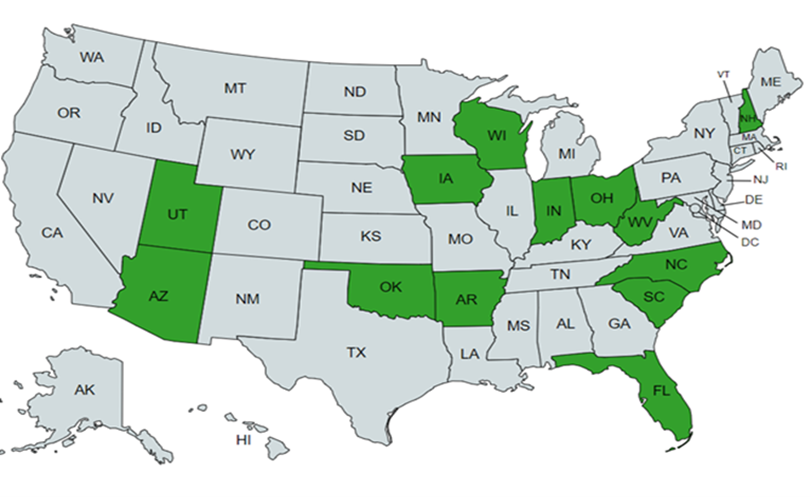
Expect to see more states “going green” in 2024.
Note on the map for instance that all the not-as-yet green states in the Southeastern Conference footprint border one or more green states. States with universal choice programs with formula funding did not only pass choice programs for the families living in their states, but also for anyone willing to become a family living in their states. Alabama and Georgia lawmakers should consider remaining competitive or else northern Florida might start looking extremely attractive to young families in southern Alabama and southern Georgia.
Meanwhile, despite unprecedented growth, the private choice movement will have to stomp on the gas if they are going to catch up to the homeschooling movement:
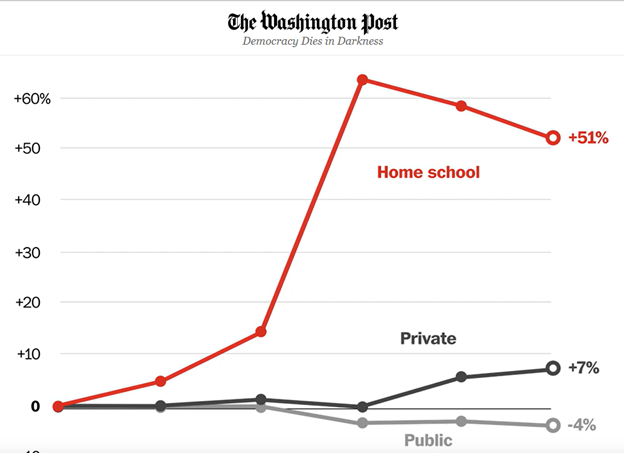
Stay tuned to this channel for more exciting developments in the months ahead.
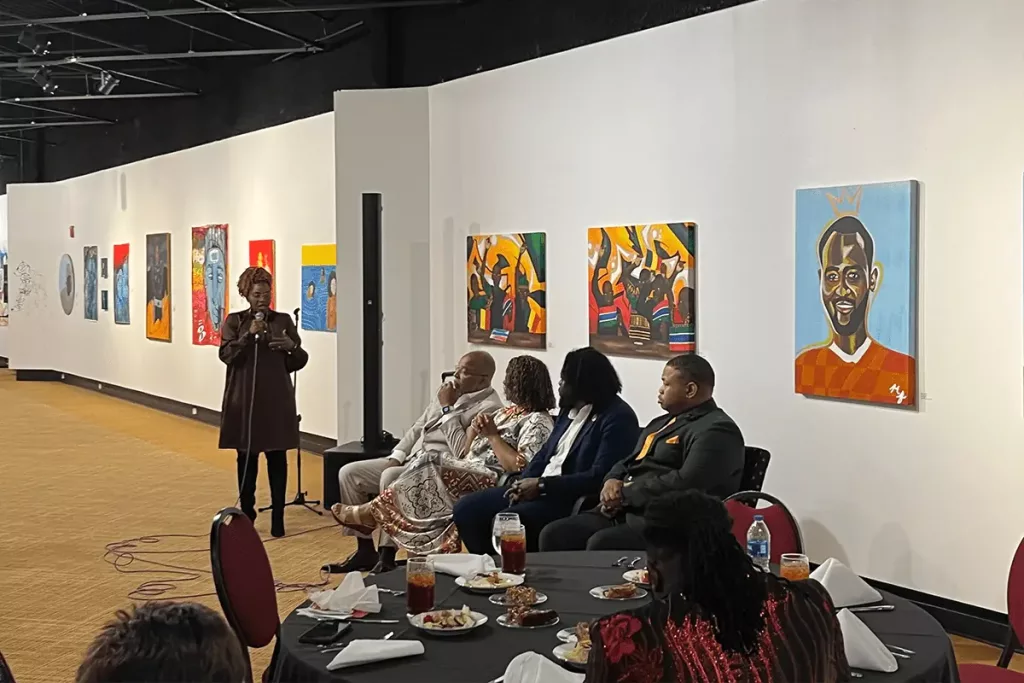
A three-day exhibit hosted by Black Minds Matter details the history of African American people's pursuit of education freedom from the Antebellum Period though today with many options for education choice.
Black Minds Matter recently hosted a pop-up exhibit to showcase the history of African Americans’ pursuit of education freedom, including showcasing Black school founders who are creating learning institutions with help from Florida education choice scholarships.
The three day pop up exhibit, titled Self-Determined: The Secret History of Education Freedom, hosted by Black Minds Matter at the Ritz Art and Theatre Museum, included founders of Black schools from the Black Minds Matter. director of Black-owned schools.
The exhibit was meant to showcase Black education beginning in the Antebellum Period and continued through Reconstruction, the Civil Rights Era, to present day, with education choice options ranging from district, charter, homeschools, magnet, virtual and private schools.
Some Black school founders spotlighted during the exhibit included Cameron Frazier, Dwayne Raiford Bishop, and Lady McLaughlin. Their website has a directory of almost 400 black school founders.
Black Minds Matter was founded in 2020 by Denisha Allen, who benefited from the Florida Tax Credit Scholarship program. Allen went on to work for the U.S. Department of Education under Secretary Betsy DeVos and now serves as a senior fellow at the American Federation for Children.
For more information about the exhibit or the directory, visit Black Minds Matter.